Get started
Watch a demonstration of this experiment and download the technician notes from the Education in Chemistry website: rsc.li/3R63C3N
There is a good chance that somewhere in your department you will find a copy of Ted Lister’s conspicuously orange Classic chemistry demonstrations. Although published almost 30 years ago, I frequently visited it in my early years of teaching. If this book proved as formative for you as it was for me, then you may even be able to visualise the picture on the front cover: a darkfield image of the series E £5 note with Robert Louis Stevenson seeming to persist despite being on fire. I’m certain that its place on the book’s cover helped The non-burning £5 note become one of the earliest demonstrations I used. It was also tremendously easy to replicate.
That was until 2017, when the Bank of England withdrew all paper £5 notes from circulation. The polymer notes that replaced them – although far more resilient and secure – are completely unsuitable for this demonstration because their hydrophobic surface will repel any water or ethanol.
Nevertheless, whether I was exploring the fire triangle or latent heat, I always found great value in demonstrating evaporating water’s ability to hold a material’s temperature below its ignition point. So, I needed to think of an alternative.
Kit
- Filter paper (or water colour paper)
- Tongs
- 3 x heat-resistant mats
- 45 cm3 ethanol or industrial denatured alcohol (IDA), (DANGER: highly flammable liquid and vapour, harmful)
- 45 cm3 water
- 3 x 250 cm3 beakers (diameter 7 cm)
- Bunsen burner
- Sodium chloride (optional)
Preparation
1. Prepare and label three 250 cm3 beakers: one containing 30 cm3 of water; one containing 30 cm3 of ethanol or IDA; and one containing a mixture of 15 cm3 of each.
2. Place on a heat-resistant mat.
3. Set up a Bunsen burner well away from the beakers (at least 1 m) on its own heat-resistant mat.
4. Place the third mat near to the Bunsen in case you need to smother a flame.
5. If you are not doing the demo in a dimly lit room, add a spatula of sodium chloride to the alcohol-containing beakers to improve the visibility of the blue ethanol/IDA flame.
Health, safety and disposal
- Read our standard health and safety guidance and carry out a risk assessment before running a live demonstration.
- Wear eye protection.
- Clear the desk of any flammable material you are not using in the demonstration.
- Ethanol and IDA are dangerous – highly flammable liquid and vapour and may cause serious eye irritation. IDA is also harmful if swallowed and may cause damage to organs. CLEAPSS members should consult HC040A.
- To dispose of leftover ethanol or IDA, dilute to 5% v/v and pour down a foul-water drain.
Health, safety and disposal
- Read our standard health and safety guidance (rsc.li/3TZoxYH) and carry out a risk assessment before running a live demonstration.
- Wear eye protection.
- Clear the desk of any flammable material you are not using in the demonstration.
- Ethanol and IDA are dangerous – highly flammable liquid and vapour and may cause serious eye irritation. IDA is also harmful if swallowed and may cause damage to organs. CLEAPSS members should consult HC040A: bit.ly/4e0I1Uj
- To dispose of leftover ethanol or IDA, dilute to 5% v/v and pour down a foul-water drain.
In front of the class
Wear eye protection. Ensure the Bunsen burner is set to a yellow (luminous) flame. Use the tongs to soak one piece of filter paper in the water. Each time allow excess liquid to drip off into the beaker before moving it over the bench to the Bunsen. Pass the paper through the flame. The paper will not burn at all.
Repeat the process with another piece of paper dipped into the ethanol/IDA. This time the liquid ignites immediately. Keep holding the burning paper over the heat-resistant mat. After a few seconds the paper begins to burn.
When you soak a fresh piece of paper in the 50:50 alcohol–water mixture and you repeat the process, the liquid lights instantaneously but the paper is left unburned.
Tips
The appeal of this demonstration was always in its visual simplicity: with real money the stakes were clear. Therefore, there is great benefit from you creating your own story around it.
- Try drawing on the paper in pencil or an ink which is insoluble in both solvents.
- Or, cut words into the paper. The word ‘hate’ on the ethanol-only paper with the word ‘hope’ on the ethanol–water mix would be a good option.
- If you are using watercolour paper you have the option to run through a printer but do test that your printer ink is insoluble in both solvents first.
- You could decorate only the ethanol–water paper and use your school symbols, crest or colours.
Tips
The appeal of this demonstration was always in its visual simplicity: with real money the stakes were clear. Therefore, there is great benefit from you creating your own story around it. Here are some ideas:
- Try drawing on the paper in pencil or an ink which is insoluble in both solvents.
- Or, cut words into the paper. The word ‘hate’ on the ethanol-only paper with the word ‘hope’ on the ethanol–water mix would be a good option.
- If you are using watercolour paper you have the option to run through a printer but do test that your printer ink is insoluble in both solvents first.
- You could decorate only the ethanol–water paper and use your school symbols, crest or colours.
Teaching goal
This demonstration illustrates the necessary conditions for combustion using the cooling power of evaporation. Although the enthalpy of vaporisation for both water and ethanol are significant due to hydrogen bonding (+44 and +39 kJ mol–1 respectively), this pales in comparison to the enthalpy of combustion of ethanol, –1367 kJ mol–1. A portion of ethanol exposed to an ignition source will evaporate and combust at the air–fuel interface. The heat released will be sufficient to vaporise and combust more ethanol in turn. Although some cooling occurs in the evaporation, the flame heats the paper until it reaches its own ignition point at approximately 230°C.
Where sufficient water is present, the evaporative debt is not repaid. In theory there should be enough energy to heat, vaporise and still burn the paper. But most of this energy is lost to the room, not directed into the paper, which stays well below its ignition temperature.
More resources
- A flash in the pan provides another illuminating demonstration, revealing the danger of a chip pan fire.
- Add real-world context with our feature on Firefighting chemistry and accompanying practical where learners plan and carry out their own investigation into the reagents that produce carbon dioxide foam.
- Find support for teaching this topic with your 11–14 learners in our CPD article How to teach chemical energetics.
- Our Everyday chemistry article What state of matter is fire?, with accompanying TikTok video, can be used as a reading comprehension activity.
- Encourage your learners to go on to inspire others with our job profile featuring Alice, a secondary school science teacher.
Declan Fleming
Downloads
Non-burning paper technician notes
Handout | PDF, Size 0.22 mbNon-burning paper technician notes
Editable handout | Word, Size 0.49 mb




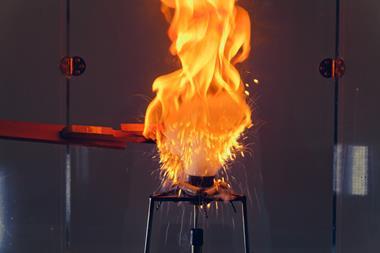


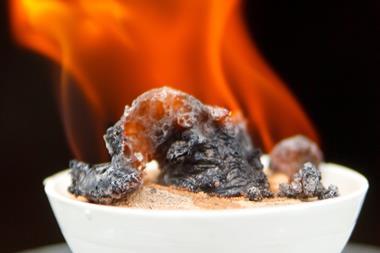



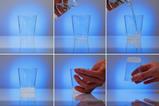



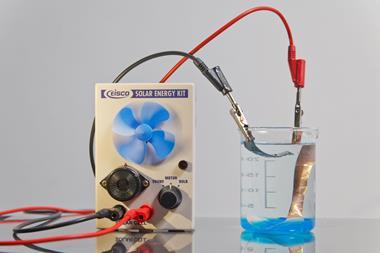
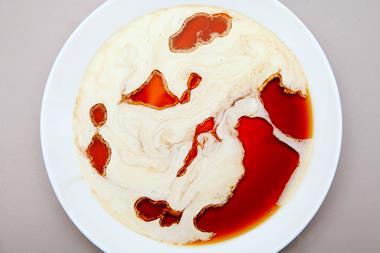






No comments yet